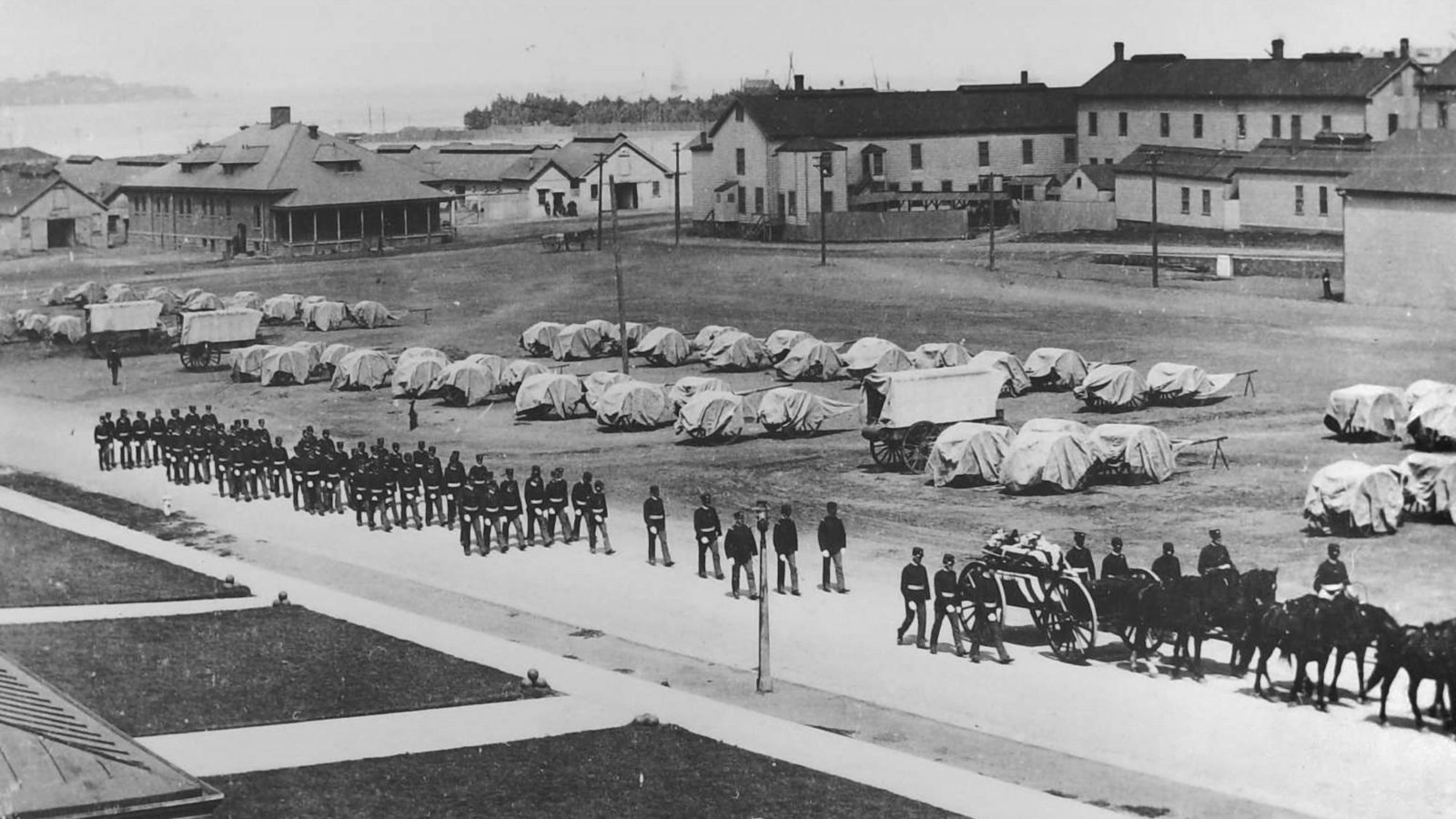Last updated: March 2, 2021
Place
Burials and Important Figures - Conclusion: Philippines War Tour

The tragedy of war is nowhere more evident that at our national cemeteries. The Philippine wars are no exception. In the early 1900s there were dozens of fresh graves in the sections to your right. The cemetery saw a huge increase of burials at this time; from 48 in 1898, to a peak of 855 in 1901.
Soldier's bodies were first sent to the U.S. Army Morgue and Office of Identification in Manila. Remains were then shipped to San Francisco, some for further transport to their home communities, others for burial in the national cemetery. The Presidio's flag was lowered to half-staff on days when ships bearing bodies arrived in the harbor.
The question of where to store the bodies before burial arose in 1899. The first recommendation was to use the dining rooms of the nearly empty the Model Camp. The post commander thought that a poor solution, especially if the press got wind of it. Instead, he designated storage in a large temporary recreation center that the YMCA had erected near the Lombard Gate.
Volunteers training at the Presidio saw their fallen comrades return. One of the 51st Iowa Infantry regiment wrote this of a military funeral at the Presidio:
"A funeral here is a most impressive ceremony. Led by a band playing low solemn music, pall-bearers and an army wagon with the corpse follow; then company officers and comrades of the dead, marching in slow cadence to the military burying ground, where a salute is fired by his mess mates. The band then plays "The Star Spangled Banner," as soldiers stand at parade rest, and officers with hats removed and bowed heads."
In the summer of 1900, the San Francisco Call reported on the crowding at the national cemetery:
"The bodies of 110 men who died in Manila now remain unburied at the Presidio. Every day witnesses the burial of at least twenty, but they arrive almost as fast. Extension of the limits of the cemetery is now a necessity, and a force of men has been at work during the last few days removing the trees to utilize a portion of the national cemetery that is now covered with a growth of timber. To utterly destroy the growth, a charge of powder is placed under the roots and set off. It is expected that the acre of ground covered by the trees will be cleared within the next few weeks, and that the interrupted weekly funeral processions will be resumed. "
Several notable figures of the Spanish American and Philippine wars are buried at San Francisco National Cemetery. These include -- Major General William Shafter, commander of the Cuban Campaign during the Spanish American War -- Major General Frederick Funston, Medal of honor recipient and captor and Filipino nationalist leader Emilio Aguinaldo during the Philippine War, and Sgt. William Tompkins, of the African American 10th Cavalry, who received a Medal of honor for bravery and valor in the Spanish American War. These are but a few of the thousands of men buried here who risked and, for some, gave their lives for their country during the Philippine wars. A touch-screen kiosk outside the cemetery office provides grave location information and maps if you want to visit the graves of any of these notable figures.
The Spanish American and Philippine wars not only altered the lives of the many soldiers that fought in them, but also had a lasting influence on the Presidio and San Francisco as a whole. It was during this period that the post transformed itself from a relatively sleepy duty station to one of the preeminent military installations on the west coast. It was also at this time that the Presidio became a significant part of the San Francisco community, leading up to its full involvement with the City after the 1906 earthquake.
